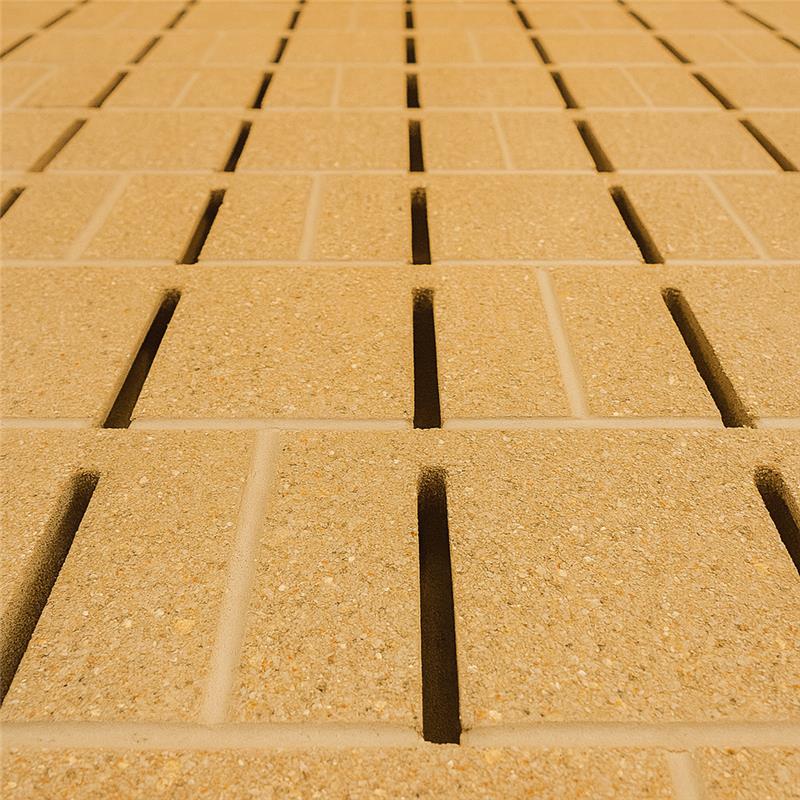Do special acoustic units have structural considerations?
Acoustic blocks and similar products have a long history of being used in various applications to absorb sound. The purpose of this page is to provide insight on how to incorporate concrete masonry block units with special acoustic properties while considering potential issues that come with using these types of units in a reinforced masonry wall system.
Part of our Masonry Specification Series
Offering recommendations accompanied with background explanatory material to explain how these recommendations were formed. Click here to see the full series.
Disclaimer
The information contained here is intended to serve as educational content for designers, specifiers, or contractors. It is not to be relied upon for formal technical advice, as masonry projects may have details and considerations that are unique to a particular project and may be beyond the scope of the content of this page.
Recommendations
Many types of acoustical concrete masonry block units can be used in the construction of reinforced and unreinforced masonry walls. The configuration and geometric properties of the specific units used on a project may have an impact on the design and construction of such walls. When preparing design drawings and project specifications, it is recommended to:
- evaluate the configuration of the specific acoustic block that will be used for the project early in the design phase,
- coordinate with the manufacturer for detailed product data, including any limitations or installation requirements,
- confirm whether the unit’s geometry allows for the specified reinforcement and grouting patterns, and
- address potential conflicts between acoustic performance and structural requirements before construction begins.
Acoustic concrete masonry units can provide excellent noise control in a wide range of applications, but their unique properties require special attention when used in reinforced masonry walls. By considering the unit geometry, bond pattern, and grouting strategy during the design phase, it is possible to achieve both the desired acoustic performance and the necessary structural capacity for the wall system.
Discussion
Acoustic concrete masonry units are commonly used to enhance sound absorption and control in buildings where noise reduction is a priority. These specialty blocks are designed with unique geometries to achieve improved acoustic performance compared to standard CMUs. Manufacturers will typically produce such units in accordance with a proprietary design. Since acoustic characteristics are not covered by CSA masonry standards, they should be reviewed by the acoustic designer based on technical information from the manufacturer.
The particular unit matters
Some types of acoustic units allow for the placement of vertical reinforcement similar to standard stretcher units, while others have geometries that can limit reinforcement options, bond pattern, and grouting strategies. Structural designers must pay special attention to units with different web arrangements or a reduced number of webs. The cells in a standard stretcher concrete masonry unit, when installed in 50% running bond (50% overlap of units of adjacent courses), align in a way that allows grout to flow down to the base of the wall and surround the reinforcement within the cell. The webs in the unit form a barrier preventing the grout from seeping into adjacent cells that are not to be grouted, in cases of partially-grouted masonry. For certain types of Acoustical/Sound Block units, constructing the wall in a stack bond pattern may be necessary to align cells vertically for proper grouting and reinforcing. Stack bond walls have different structural requirements, compared to walls constructed in running bond, which must be accounted for in the design.
Bottom Line: Ensure everyone is on the same page
Using acoustic blocks in reinforced walls often requires careful coordination between the acoustic design team, structural design team, and the masonry contractor. The wall’s reinforcement layout, grouting strategy, and bond pattern should be understood by all parties and clearly defined in the design documents to avoid conflicts during construction.
Return to Recommendations section. Return to the Specifications page.
Part of our Masonry Specification Series
Offering recommendations accompanied with background explanatory material to explain how these recommendations were formed. Click here to see the full series.

Have a question about anything here?
CMDC is made up of offices across Canada, connecting you with support through our team of technical staff.
Providing clarity and raising issues before they turn into real problems
As part of our overall effort to educate the design community and our contractor members, CMDC has compiled a collection of articles meant to address common areas of misunderstanding or confusion that have resulted in issues in past projects.


